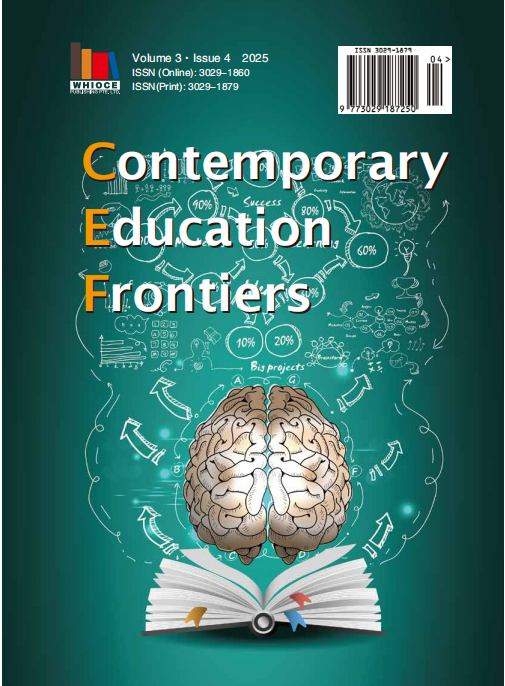Research on Chinese Translation of Mechanical Engineering English Lexis and Syntax in MTPE Mode—A Case Study of DeepSeek
DOI:
https://doi.org/10.18063/cef.v3i4.986Keywords:
Mechanical engineering English, Machine translation, Post-editing, English to Chinese translationAbstract
As globalization accelerates, international exchanges and cooperation in mechanical engineering have grown increasingly frequent, driving a steady rise in demand for translation. As traditional human translation tends to be relatively inefficient, and pure machine translation struggles to meet industry quality standards, the MTPE (Machine Translation Post-Editing) model has come into being. This study uses DeepSeek as a case study to explore post-editing strategies for mechanical engineering English under this model. As a key branch of scientific and technological English, mechanical engineering English plays a vital role in disseminating mechanical engineering expertise and facilitating international exchanges and cooperation. Such texts are marked by distinct features, strong professionalism, and considerable difficulty. At the lexical level, they employ a wealth of technical terms, nominalized structures, and abbreviations. At the syntactic level, passive voice and long, complex sentences are frequently used. Under the MTPE framework, this paper first outlines the research background, then analyzes domestic and international research on post-editing strategies for mechanical engineering English, identifies existing gaps and shortcomings, and highlights the innovations of this study. Next, it examines the strengths and limitations of DeepSeek in translating mechanical engineering English. It then offers a detailed overview of this mode, covering its core concepts, functional scope, and the specific advantages it brings to mechanical engineering English translation. By analyzing the linguistic features of mechanical engineering English at both lexical and syntactic levels, this paper selects several translation samples to explore post-editing strategies for words and sentences in this domain, aiming to provide practical insights that can enhance the quality and efficiency of mechanical engineering English translation.
References
Zhang Yahui. Analysis of the Motivation and Mode of Overseas Mergers and Acquisitions in China’s Construction Machinery Industry under Economic Globalization—Taking XCMG Group as an Example[J]. Commerce Digest, 2019, (28): 15-16.
Wen Hong, Guan Xiaofei. Stylistic Features and Translation of Mechanical English[J]. Chinese Science & Technology Translators Journal, 2022, 35(04): 9-12.
Dai Guangrong, Liu Siqi. Neural Machine Translation: Progress and Challenges[J]. Foreign Language Education, 2023, 44(01): 82-89.
Feng Quangong, Cui Qiliang. Post-Editing Research: Focus Analysis and Development Trends[J]. Shanghai Journal of Translators, 2016, (06): 67-74+89+94.
Zhou Xinghua, Li Yiyang. An Inquiry into the Post- editing Functions of Computer- Aided Translation Software[J]. Journal of Beijing International Studies University, 2021, 43(05): 52- 65.
Jiang Yue. Linguistic Features of Mechanical English and Strategies for Improving Mechanical English Reading Ability[J]. Overseas English, 2020, (20): 131-132.
Li Xiaohong. Translation and Application of Mechanical Engineering English Terms[J]. Chinese Internal Combustion Engine Engineering, 2024, 45 (06): 10.
Li Suiting, Long Xiang. Exploration of the Characteristics of Mechanical Professional English and Its Translation Principles- From the Perspective of In- depth Education[J]. Journal of Guangxi College of Education, 2022, (03): 91-97.
Shi Ping, Editor. Mechanical Engineering Professional English (15th Edition)[M]. Harbin: Harbin Institute of Technology Press, 2014.
Li Keying. Translation of Business English Texts under the “CAT+MT+PE” Model[J]. English Square, 2024, (24): 15-18.
Hu Sike. The Generalization of Professional Terminology in Pragmatic Contexts[J]. Journal of Hunan University of Science and Technology(Social Science Edition), 2022, 25(02): 154-161.
Liu Ge. A Study on the Application of Functional Equivalence Theory in Scientific English Translation[J]. Journal of Harbin Vocational & Technical College, 2024, (01): 121-123.
Guo Kanjun. Nominalization Structures in Scientific English and Their Chinese Translation[J]. Journal of North China Electric Power University(Social Sciences), 2009, (01): 114-118.
Zhang Yue, Editor. English Course for Machinery Manufacturing[M]. Beijing: China Machine Press, 2007.
Lyu Yuting. Characteristics of Scientific and Technological Articles and Translation Skills[J]. Chinese & Foreign Entrepreneurs, 2016, (17): 253.

